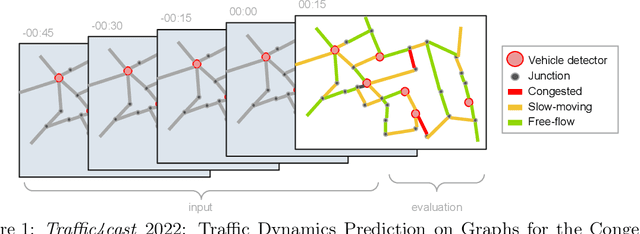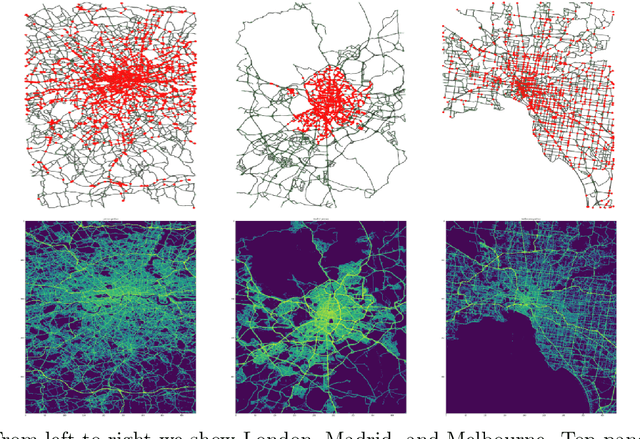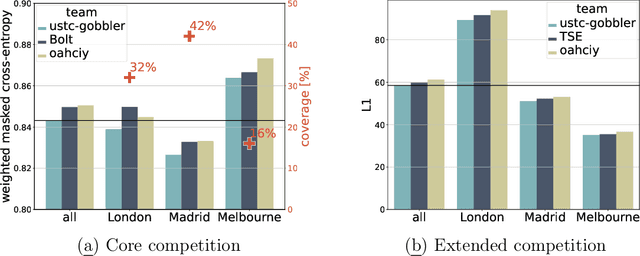Vishal Mahajan
Traffic4cast at NeurIPS 2022 -- Predict Dynamics along Graph Edges from Sparse Node Data: Whole City Traffic and ETA from Stationary Vehicle Detectors
Mar 14, 2023



Abstract:The global trends of urbanization and increased personal mobility force us to rethink the way we live and use urban space. The Traffic4cast competition series tackles this problem in a data-driven way, advancing the latest methods in machine learning for modeling complex spatial systems over time. In this edition, our dynamic road graph data combine information from road maps, $10^{12}$ probe data points, and stationary vehicle detectors in three cities over the span of two years. While stationary vehicle detectors are the most accurate way to capture traffic volume, they are only available in few locations. Traffic4cast 2022 explores models that have the ability to generalize loosely related temporal vertex data on just a few nodes to predict dynamic future traffic states on the edges of the entire road graph. In the core challenge, participants are invited to predict the likelihoods of three congestion classes derived from the speed levels in the GPS data for the entire road graph in three cities 15 min into the future. We only provide vehicle count data from spatially sparse stationary vehicle detectors in these three cities as model input for this task. The data are aggregated in 15 min time bins for one hour prior to the prediction time. For the extended challenge, participants are tasked to predict the average travel times on super-segments 15 min into the future - super-segments are longer sequences of road segments in the graph. The competition results provide an important advance in the prediction of complex city-wide traffic states just from publicly available sparse vehicle data and without the need for large amounts of real-time floating vehicle data.
Similarity-based Feature Extraction for Large-scale Sparse Traffic Forecasting
Nov 13, 2022Abstract:Short-term traffic forecasting is an extensively studied topic in the field of intelligent transportation system. However, most existing forecasting systems are limited by the requirement of real-time probe vehicle data because of their formulation as a time series forecasting problem. Towards this issue, the NeurIPS 2022 Traffic4cast challenge is dedicated to predicting the citywide traffic states with publicly available sparse loop count data. This technical report introduces our second-place winning solution to the extended challenge of ETA prediction. We present a similarity-based feature extraction method using multiple nearest neighbor (NN) filters. Similarity-based features, static features, node flow features and combined features of segments are extracted for training the gradient boosting decision tree model. Experimental results on three cities (including London, Madrid and Melbourne) demonstrate the strong predictive performance of our approach, which outperforms a number of graph-neural-network-based solutions in the task of travel time estimation. The source code is available at \url{https://github.com/c-lyu/Traffic4Cast2022-TSE}.
 Add to Chrome
Add to Chrome Add to Firefox
Add to Firefox Add to Edge
Add to Edge